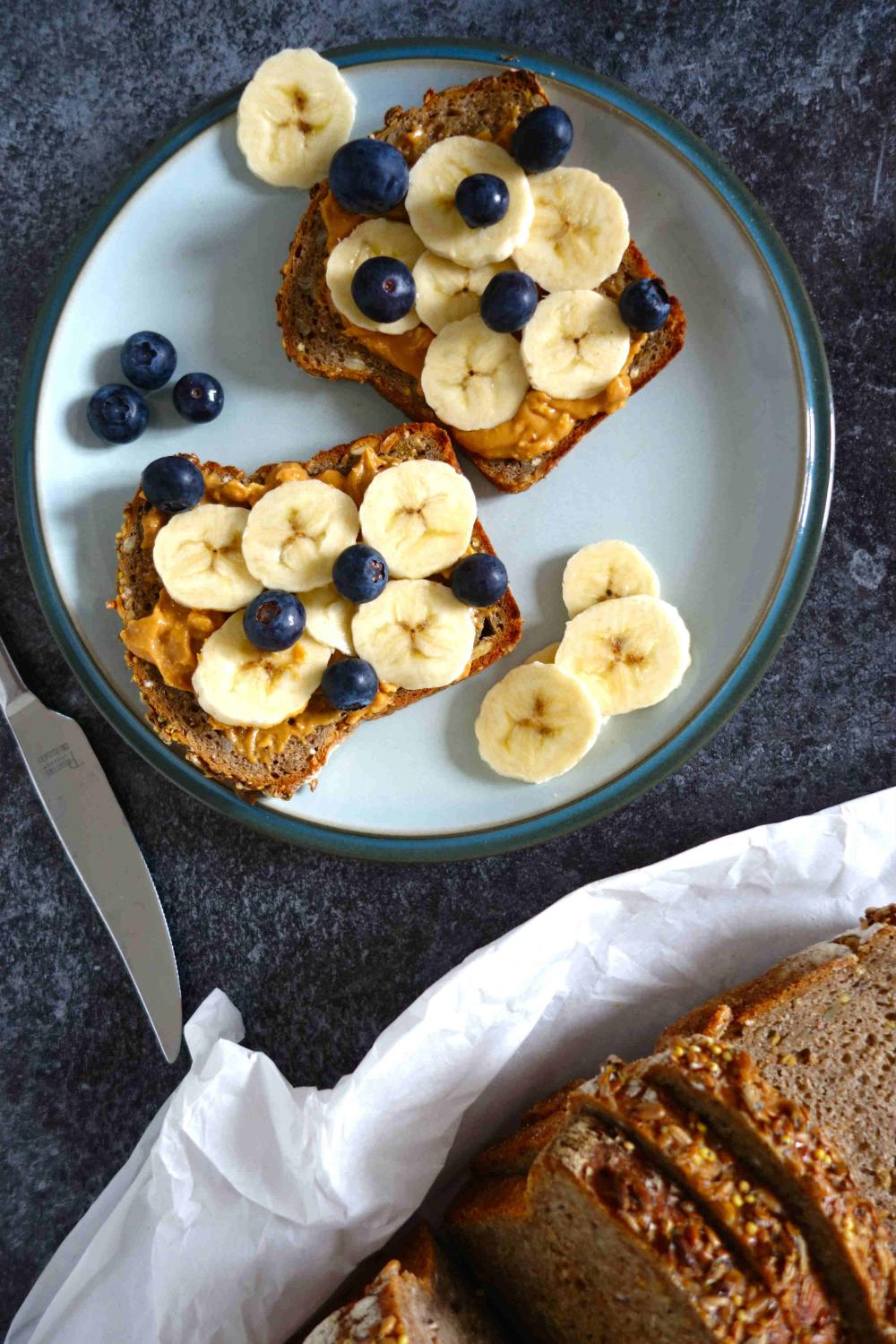Toasted rye bread with nut butter and banana makes a delicious breakfast or afternoon snack. I like using almond butter, but the classic banana and peanut butter combination is also a winner.
If you can’t get hold of chopped rye you can add an extra 40g of seeds instead. Chopped rye is traditionally used in pumpernickel bread, and adds some extra texture to your loaf. The sourdough starter adds a lovely depth of flavour, as well as contributing to the rise. This recipe also uses fresh yeast to make it easier for beginners to get the dough to rise, as 100% rye bread tends to be dense by nature. Rye dough is very sticky due to the nature of the grain, so don’t be surprised if it feels different to wheat bread doughs when handling it. A dough scraper is invaluable to keep the dough under control, and to prevent it spreading and getting stuck to your work surface.
If you haven’t made a sourdough starter before, there is a chapter in my book which talks you through the steps, and a recipe on p.96 for a rye sourdough starter.
I used our Shipton Mill organic light rye flour for this bread.

